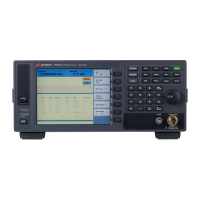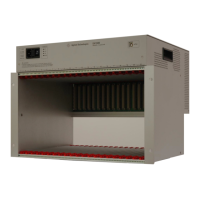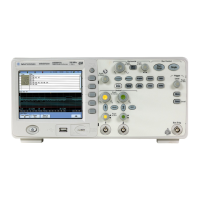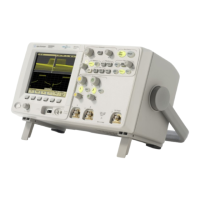Marker functions Peak signal track, frequency counter, band power
Band power markers
Markers can be placed on any time, frequency, or
demodulated trace for direct computation of band
power, rms square root (of power), C/N, or C/No,
computed within the selected portion of the data.
Trace math
Trace math can be used to manipulate data on each
measurement. Applications include user-defined
measurement units, data correction, and normalization.
Operands Measurement data, data register, constants, jω
Operations +, –, x, /, conjugate, magnitude, phase, real,
imaginary, square, square root, FFT, inverse FFT,
windowing, logarithm, exponential, peak value,
reciprocal, phase unwrap, zero
Trace formats Log mag (dB or linear), linear mag, real (I), imag (Q),
wrap phase, unwrap phase, I-Q, constellation,
Q-eye, I-eye, trellis-eye, group delay
Trace layouts 1 to 4 traces on one, two, or four grids
Number of colors User-definable palette
Spectrogram display
Types Color – normal and reversed
Monochrome – normal and reversed
User colormap – 1 total
Adjustable parameters Number of colors
Enhancement (color-amplitude weighting)
Threshold
Trace select When a measurement is paused any trace in the
trace buffer can be selected by trace number. The
marker values and marker functions apply to the
selected trace.
Z-axis value The z-axis value is the time the trace data was
acquired relative to the start of the measurement.
The z-axis value of the selected trace is displayed
as part of the marker readout.
Memory Displays occupy memory at a rate of 128 traces/MB
(for traces of 401 frequency points)
8
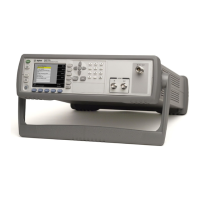
